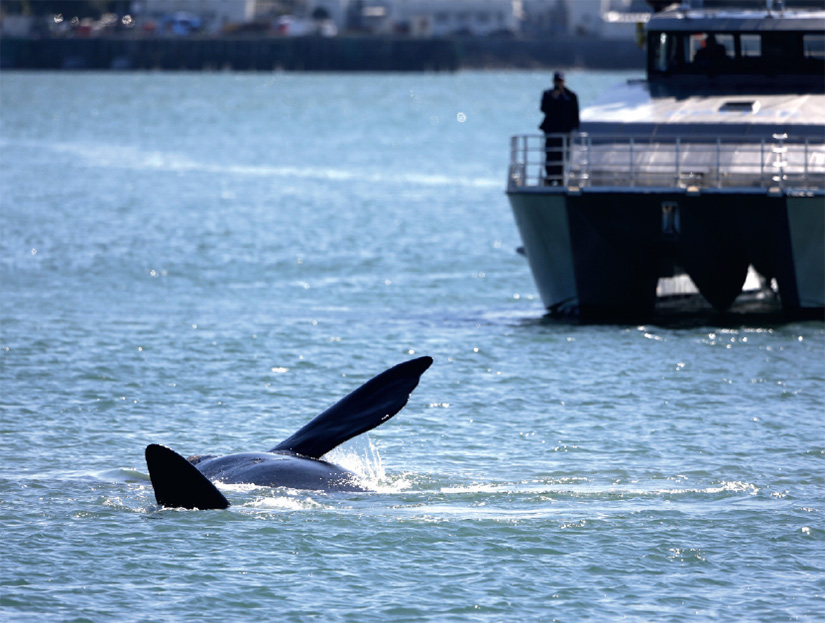Coming back
I’m used to gridlock on Auckland’s southern motorway but traffic chaos on Tamaki Drive a few weeks ago was something special.
A barnacle encrusted, 15 metre long right whale decided to hang out for the day – rolling and flipping – at times ten metres from the road causeway near Mechanics Bay.
Forget the 4pm clearway rule: cars veered onto the verge wherever they could, smart phones were whipped out, and texts summoning family and friends bounced around the city’s cell towers. This was a street festival, a cetacean-inspired flash mob, a celebration of the magic of the Hauraki Gulf Marine Park.
Check out the buzz on this video clip:
There was even a support act at the party: a New Zealand fur seal basking on rocks under the bridge over the entrance to Hobson Bay.
This is good news indeed. Right whales and fur seals bore the brunt of the first waves of exploitation of our shores.
Our Subantarctic Islands have been critical in the reappearance of these iconic species. Relic populations of seals and whales have built up in storm-lashed harbours and animals from them are beginning to frequent local shores on their migratory and foraging journeys.
Slowly but surely – if we allow nature time and space to recover – the remarkable abundance of the Gulf can return.
We have explored and encouraged understanding of this in our annual seminars – the plight of our resident Bryde’s whales, endemic seabirds, popular fish stocks, island-bound land birds, and our lost green-lipped mussel reefs.
And in each case we are seeing signs of engagement and progress. Last year’s seminar heard about how 3.5 million farm-grown mussels had been turned into living reefs, how commercial fishers had become champions of our black petrels and recreational fishers were being urged to “limit their catch not catch their limit.”
This year’s seminar on October 27 offers more inspiration and encouragement.
Dr Nick Shears will reveal the most significant findings from 40 years of research around Leigh Marine Reserve, Dr Mark Morrison will ask how far we can take the restoration of the Gulf’s marine habitats and Sanford CEO Volker Kuntzch will explain the company’s new approach to marketing and managing wild fisheries.
Voyager Hoturoa Barclay-Kerr will consider the Gulf – Tikapa Moana – from the perspective of his ocean-going waka, vet Alison Dewes will consider how farmers can play a part in catchment care and Rod and Sue Neureuter will share the trials and responsibilities of looking after a family-owned island.
The annual Hauraki Gulf Marine Park Seminar at Auckland Museum is our opportunity to share the remarkable stories and people of the Gulf.
I hope you can join us for the day on October 27.


